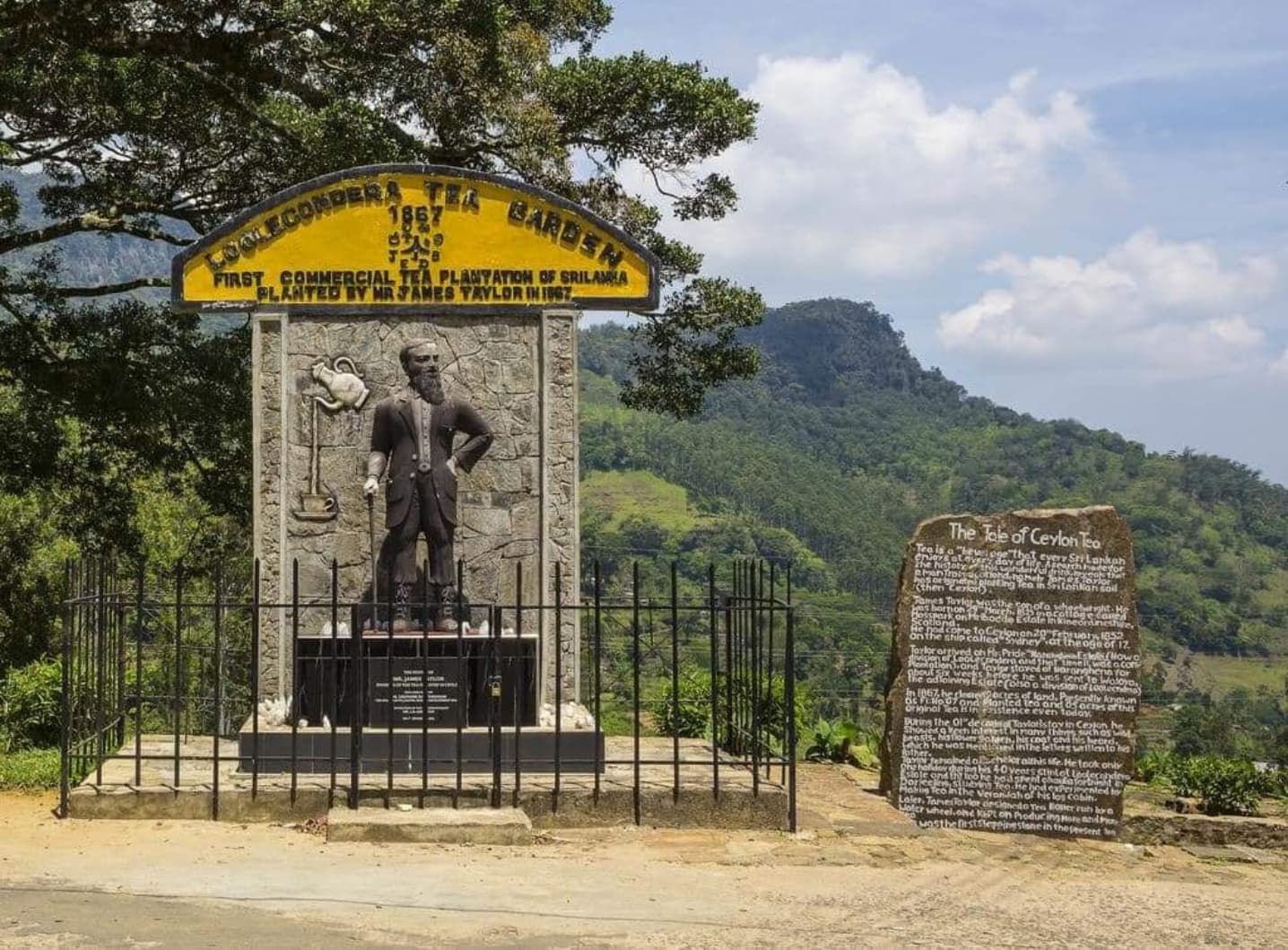Currently Empty: $0.00

October 13, 2024
0 Comments
James Taylor: The Origin of Ceylon Tea
James Taylor: The Origin of Ceylon Tea
The Loolcondera Estate, where James Taylor first lived and worked, became a historic landmark and is often regarded as the birthplace of Ceylon tea.
Situated in the scenic hills of Hewaheta near Kandy, is where Taylor first began his experiments with tea in the 1860s. It was here that he carefully cultivated tea on a 19-acre plot, importing seeds from Assam and to manually roll and oxidize the leaves. Now Ceylon tea has its own unique and world renowned flavour.
A Simple setup for a Groundbreaking Industry
Initially, Taylor’s residence was a basic setup with hand-rolled tea leaves processed on wooden tables. Clay stoves and charcoal fires were used for drying the leaves, a method that later evolved into the elaborate tea manufacturing processes seen today.
His initial tea-making methods required intense labor and involved a series of trial-and-error steps, but they paved the way for Ceylon tea to gain international acclaim.
The First Ceylon Tea Factory
As Taylor’s experiments succeeded, his bungalow transformed into one of the earliest tea processing sites in Ceylon. With the assistance of a planter named Mr. Nobel, Taylor refined his techniques, improving plucking, withering, and rolling.
The first roller used to manufacture Ceylon tea was stationed there, marking the bungalow as one of the first tea factories on the island.
Legacy and Preservation
What remains are enduring symbol of the origins of Sri Lanka’s tea industry, now open for visitors who wish to experience a part of tea history firsthand. Today, the James Taylor Section at the Ceylon Tea Museum includes artifacts from this bungalow, such as the early rolling equipment and tea-processing tools. It represents an era of hard work, innovation, and the beginning of Ceylon’s tea journey under Taylor’s visionary efforts.
#madebysrilankan #madeinsrilanka #vigtravel ❤️🇱🇰
📸 credit to photographers





